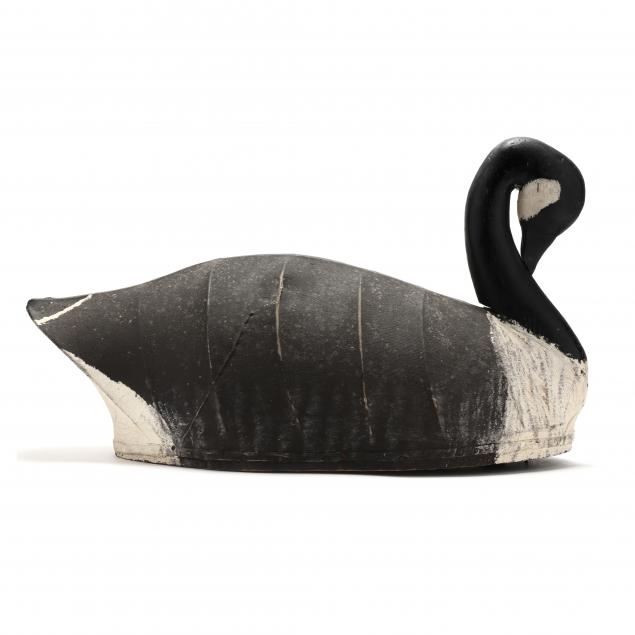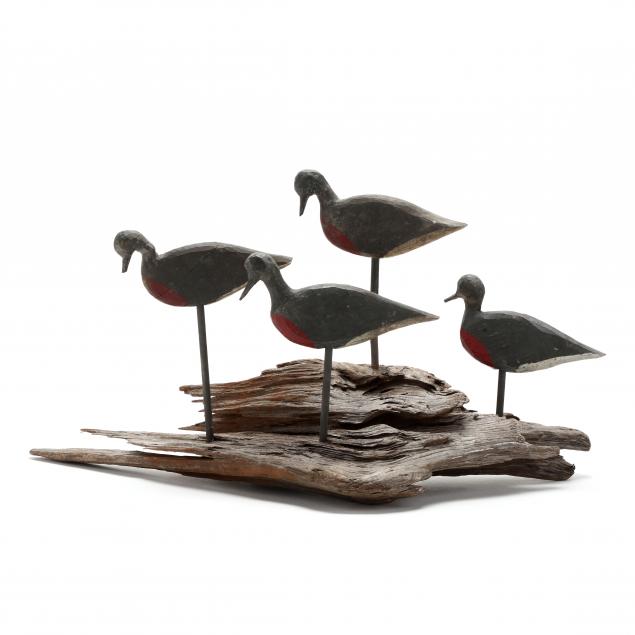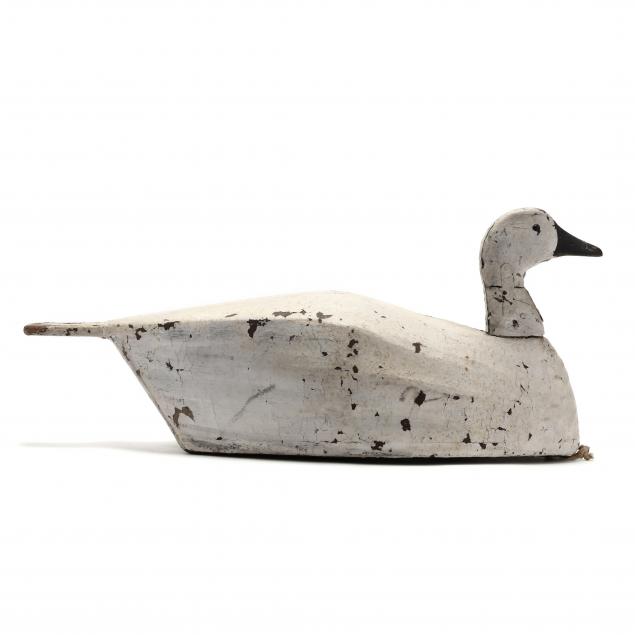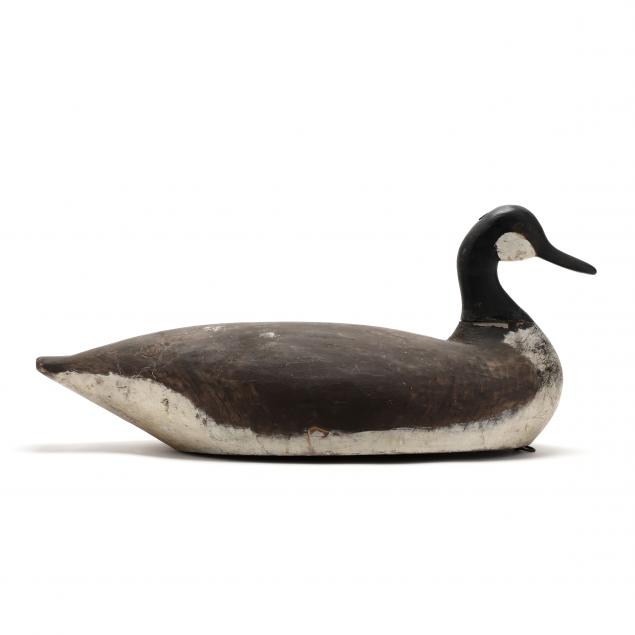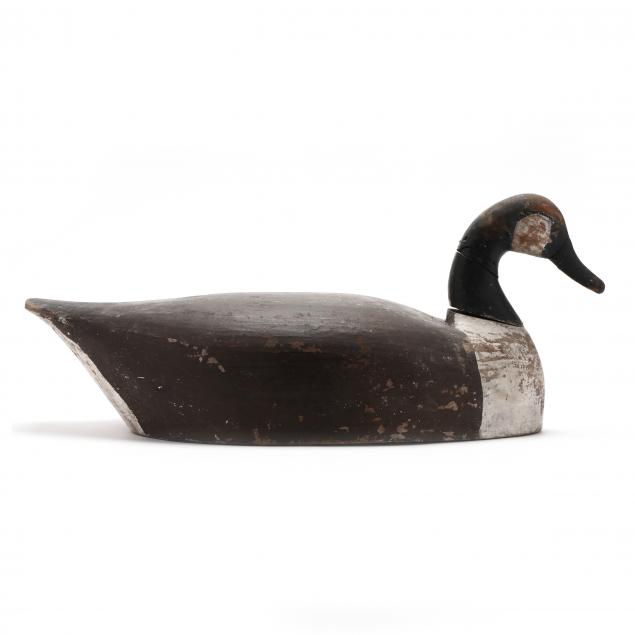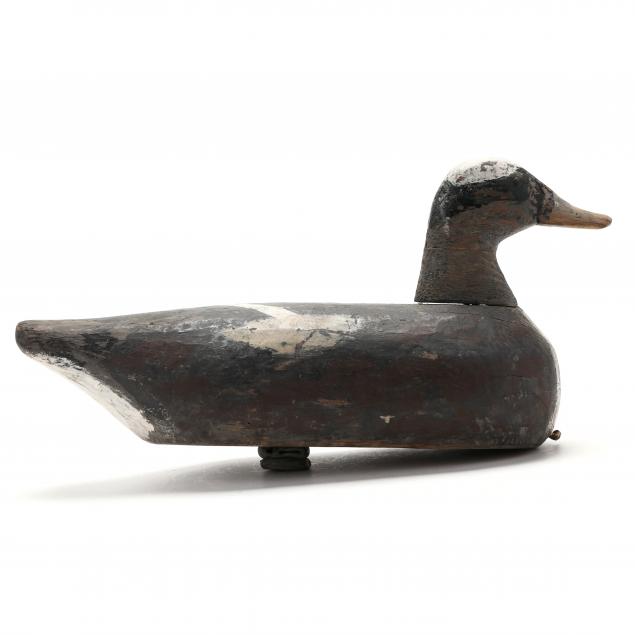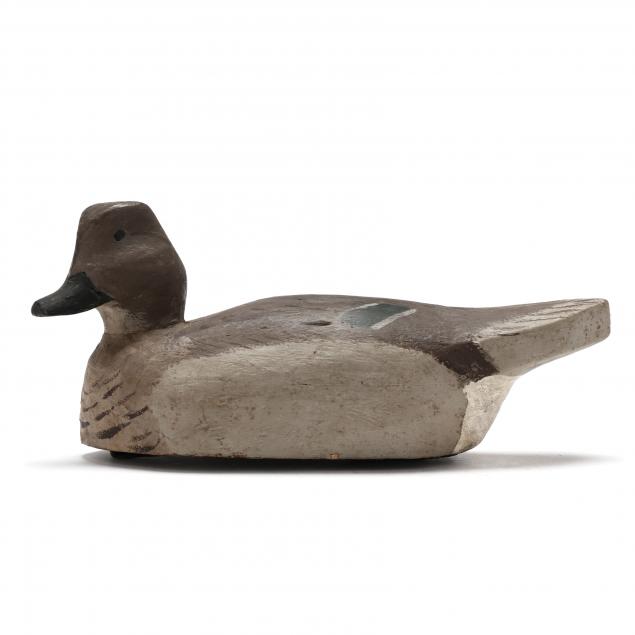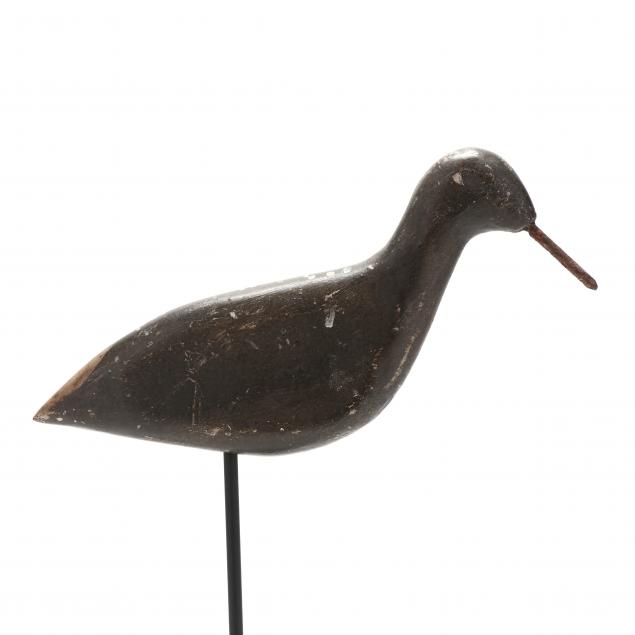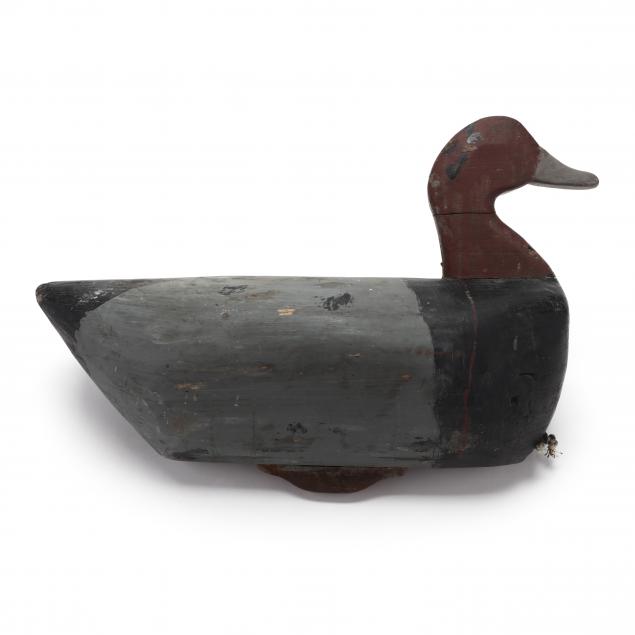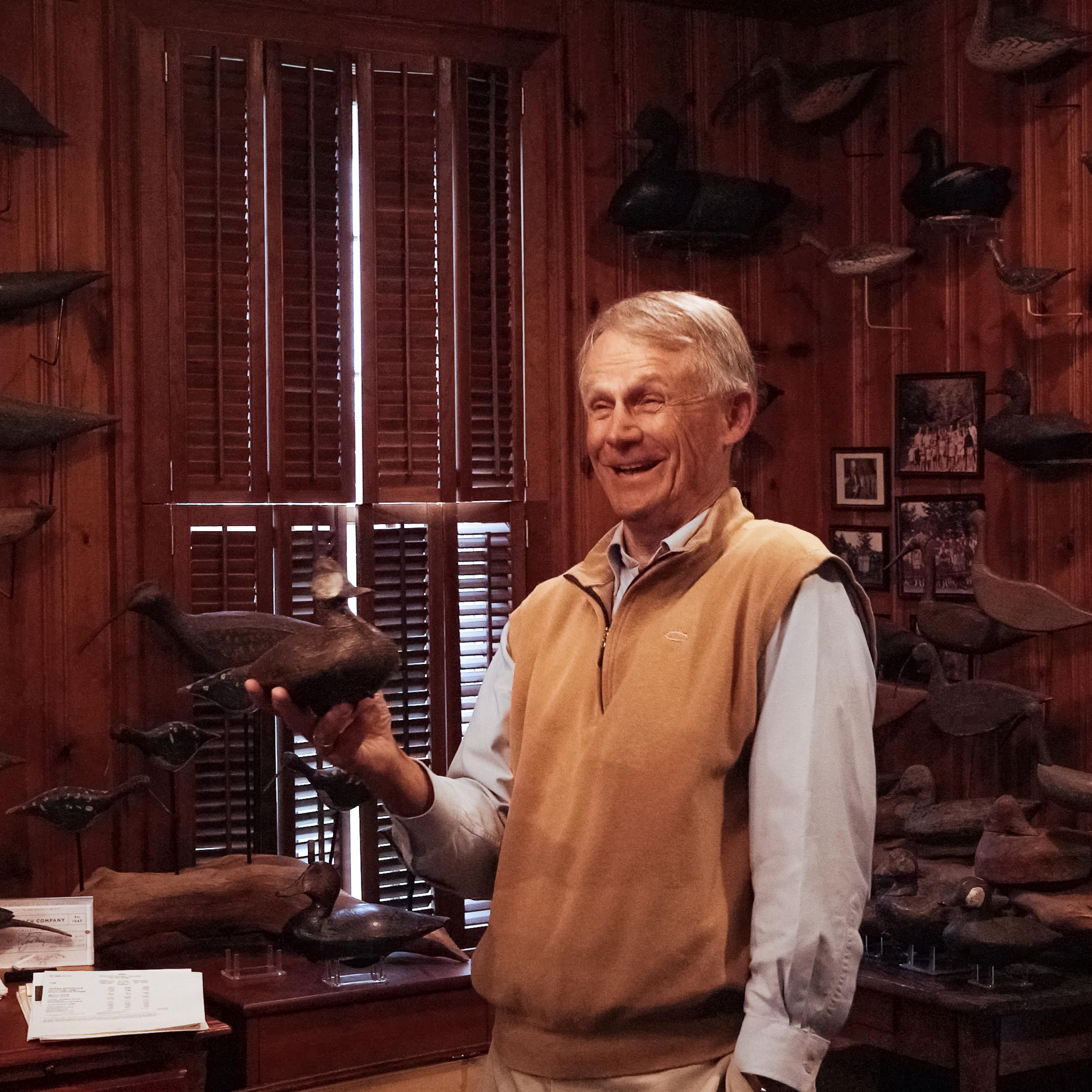
From the Personal Collection of Kroghie Andresen
Kroghie Andresen and his wife made a deal. She could renovate their kitchen if he could build a decoy room. An entire room for decoys. Just decoys.
You don’t get to the place where your decoys need a room of their own without a serious commitment to collecting. For Andresen, the author of several books on North Carolina decoys, his commitment to collecting went from hobby-level to academic long ago. Though a lifelong hunter, Kroghie wasn’t a decoy collector until his wife wanted to use decoys in the decor of the new home they’d built in Raleigh. Kroghie was unimpressed with the selection she brought home from an antique shop, so he borrowed a book on decoys from his collector neighbor and never looked back. Some time later Kroghie’s decoy collection, which he’d been keeping at his office, was featured in a magazine. It was only when his wife saw the article that she realized the extent of the past time that her decorating project jump started.
As Andresen’s collection grew from those first decoys, he became frustrated with how much misinformation there was on North Carolina decoys. Unlike northern decoys, for which there had long been an established market and scholarship, the decoys of the Southeast had been given relatively little attention in the collecting world. The market was rife with fakes and falsities. With hopes of rectifying the situation, Kroghie went to his friend Neal Connelly, a fellow member of Kroghie’s hunting club at Lake Mattamuskeet, who had written the 1982 book Waterfowl Heritage on North Carolina decoys. Kroghie wanted Connelly to write a sequel to help him correctly identify his birds. But by then Connelly had sold his own decoy collection to Currituck County and moved on to researching fishing boats. Connelly told Andresen that if he wanted there to be another North Carolina decoy book, he’d have to write it himself.
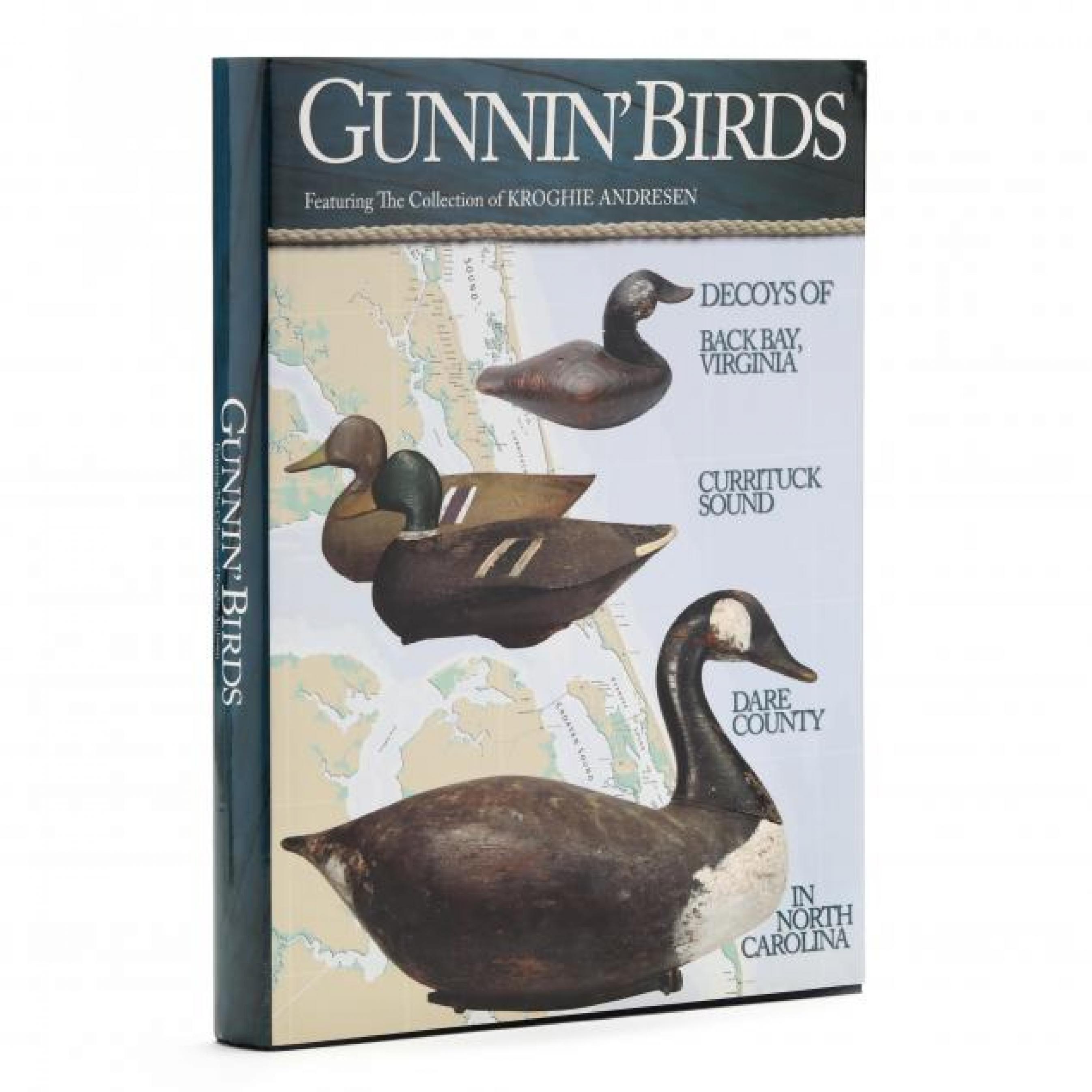
Andresen, though enthusiastic about ducks, wasn’t sure he was the man for the job. He told himself he’d start with one article about the decoys of Corolla, on the Outer Banks. But the writing and research bug got him. Several hundred interviews with the descendants of the famous Outer Banks watermen later, Kroghie published Gunnin’ Birds,” a comprehensive guide to the decoys of Back Bay, Virginia, and Currituck Sound, North Carolina, built largely around Andresen’s own (by then) massive collection.
It was only by getting as close as possible to the original carvers that Kroghie felt he could clear up which decoys had been made by whom. In 1933, a category four hurricane hit the Outer Banks, leaving masses of decoys washed up in its wake. Until that point, most carvers hadn’t signed their birds. They didn’t make decoys as art, but as tools that helped them conduct the hunts they were hired to lead. But after the hurricane, when the wreckage of the storm made it easy for competitors to claim other carvers’ decoys as their own, carvers finally began to label their work.
Andresen has written three more books on decoys since Gunnin’ Birds - one on shorebirds, one on Mitchell Fulcher, the preeminent Carteret County carver, and one documenting a 2009 exhibit at the North Carolina Museum of History on North Carolina waterfowl heritage.
Andresen has written three more books on decoys since Gunnin’ Birds - one on shorebirds, one on Mitchell Fulcher, the preeminent Carteret County carver, and one documenting a 2009 exhibit at the North Carolina Museum of History on North Carolina waterfowl heritage.
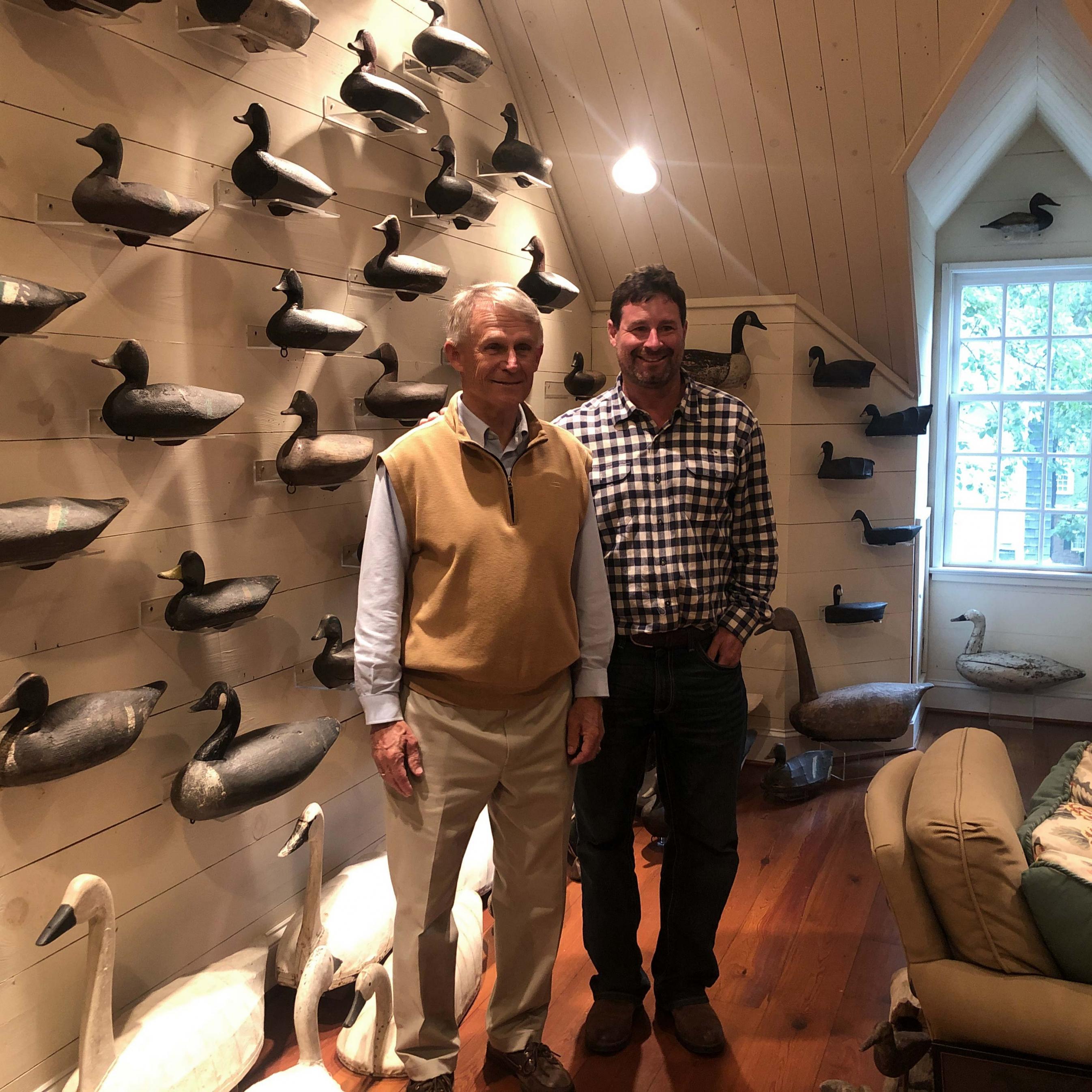
Kroghie Andresen and Robbie Smith in Andresen's decoy room
These days, Kroghie has turned his attention from collecting to mentoring younger collectors, and helping them navigate the decoy market. LLA Sporting Director Robbie Smith sought out Kroghie in that capacity when he first began to collect. Smith had bought his first few decoys at auction, and took them to Kroghie to get his educated opinion on them. As Smith tells it, he laid his new treasures out in Andresen’s driveway, and Kroghie went down the line pronouncing them “re-headed, re-painted, good, re-headed,” and so on. It was the beginning of a fruitful relationship. Smith says he called Andresen almost every day after that to talk decoys.
Kroghie makes a point of not competing with newer collectors when they bring his attention to something interesting in a sale for his opinion. As his decoy room will attest, his collection is replete. He does still keep an eye out for decoys from the Northern Outer Banks by carvers such as Solomon Beasley and John Fulcher, which are 120-130 years old and Andresen says are underappreciated. He’ll also buy decoys from Pimlico Sound, where he hunted in his childhood but hadn’t done much collecting.
As much as Kroghie’s collection gives him personal pleasure, it has also become an invaluable resource in the collecting community. Kroghie keeps a written record of the provenance and attributes of every single one of his decoys, which at one point numbered around 1,300. And so not only do Kroghie’s books and mentorship benefit fellow collectors through their wealth of knowledge, but as Andresen consigns his decoys to auctions like ours, he reintroduces material to the market that carries the pedigree of his disciplined research. In effect, Kroghie Andresen has almost single-handedly brought an unprecedented level of professionalism and integrity to the rich history of North Carolina decoys.
The Summer Decoy & Sporting Auction
Thursday, June 3rd
12:00pm (EDT)
Featured Decoys from the Personal Collection of Mr. Kroghie Andresen, Charlotte, North Carolina
As much as Kroghie’s collection gives him personal pleasure, it has also become an invaluable resource in the collecting community. Kroghie keeps a written record of the provenance and attributes of every single one of his decoys, which at one point numbered around 1,300. And so not only do Kroghie’s books and mentorship benefit fellow collectors through their wealth of knowledge, but as Andresen consigns his decoys to auctions like ours, he reintroduces material to the market that carries the pedigree of his disciplined research. In effect, Kroghie Andresen has almost single-handedly brought an unprecedented level of professionalism and integrity to the rich history of North Carolina decoys.
The Summer Decoy & Sporting Auction
Thursday, June 3rd
12:00pm (EDT)
Featured Decoys from the Personal Collection of Mr. Kroghie Andresen, Charlotte, North Carolina


